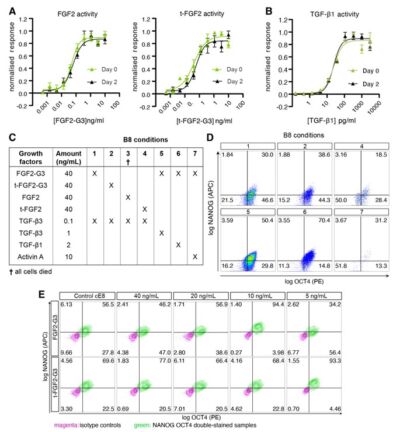EGF family
The Epidermal Growth Factor (EGF) family includes EGF and Neuregulins. The EGF family members play essential roles in regulating cell proliferation, survival, differentiation and migration. Recombinant EGF is a key component of many organoid media, along with other stem cell niche factors, R-spondin 1, noggin or gremlin, Wnt3a and FGF-10. In addition, epidermal growth factor is used for establishing and maintaining intestine, stomach, liver, pancreas, brain and cancer organoids.
EGF
bioRxiv preprint 2024
From the lab of Professor Francesca Spagnoli, King’s College London, UK
From the lab of Jan Żylicz, University of Copenhagen, Denmark
NRG-1
From the lab of Alessandro Bertero, University of Turin in collaboration with Qkine

Cell therapy is becoming a possibility for many previously untreatable conditions, and it should be accessible to everyone. Creating a cost-effective, reliable and reproducible way of culturing human induced pluripotent stem cells (hiPSCs) in a range of research labs, and allowing large scale culture for gene-editing purposes takes us one step closer to this.
Using high potency thermostable Qkine 145 amino acid FGF-G3 reduce FGF-2 use 8-fold and for weekend-free culture reduced media use by 57%. This makes hiPSCs a more accessible model for many labs doing basic and translational research.
